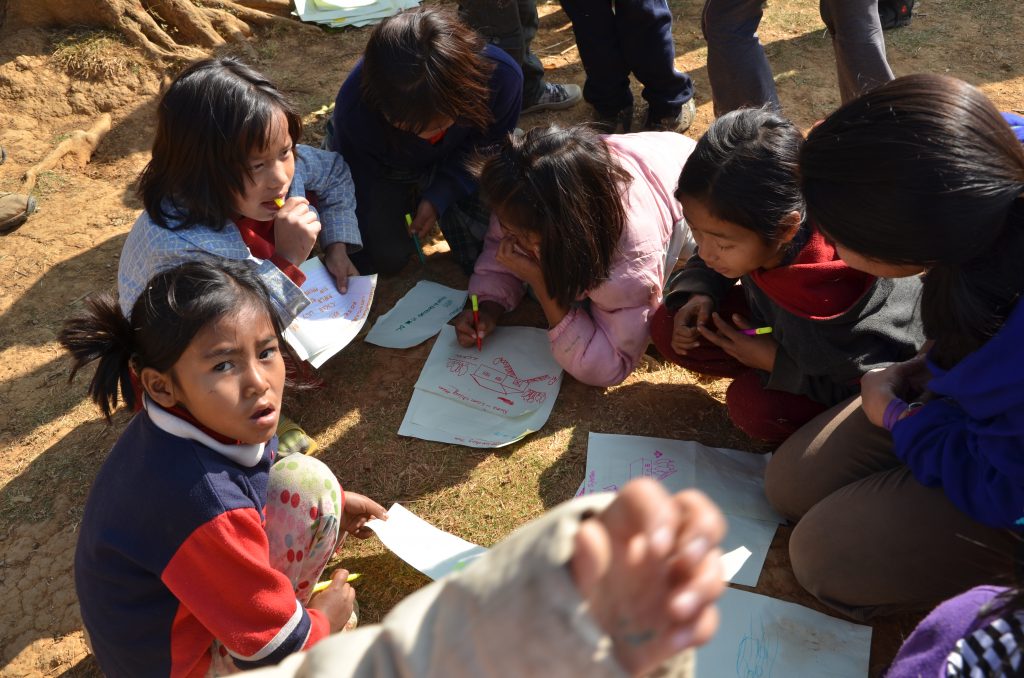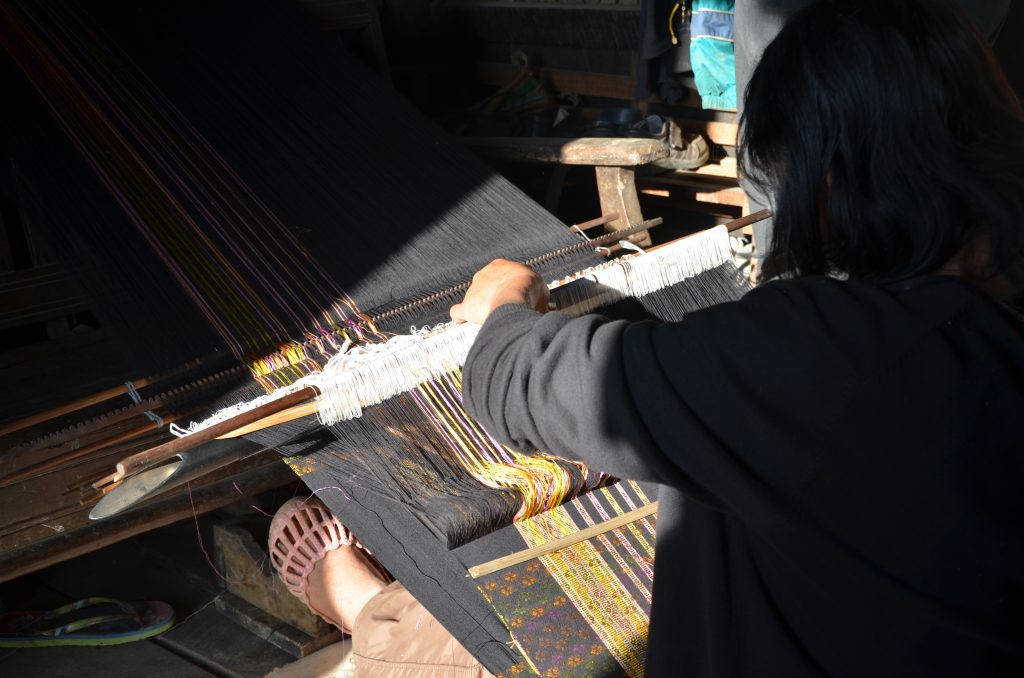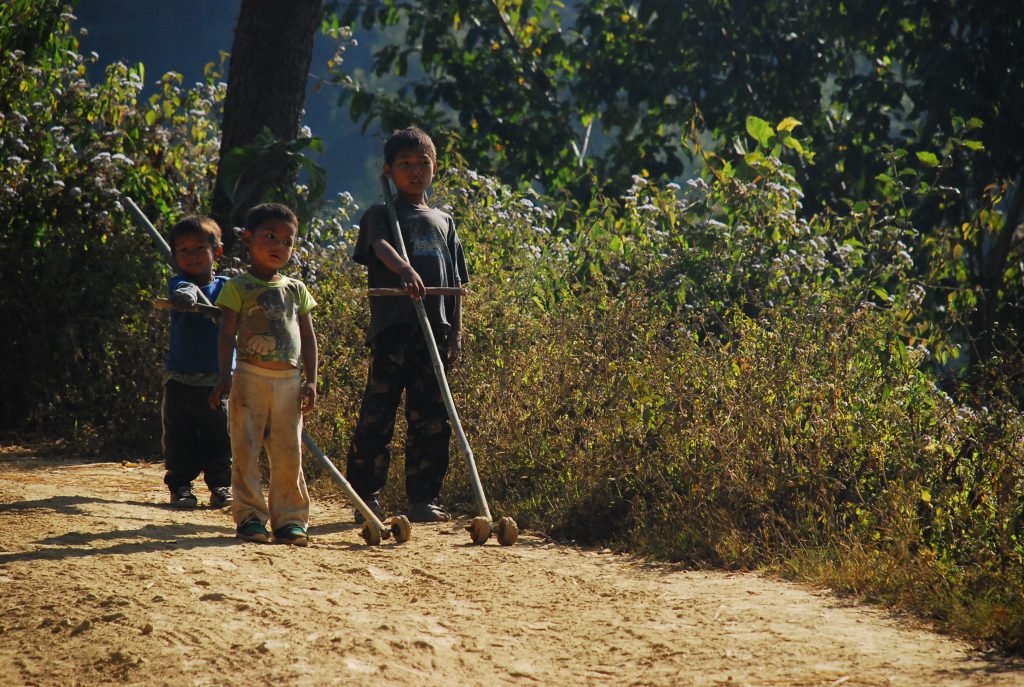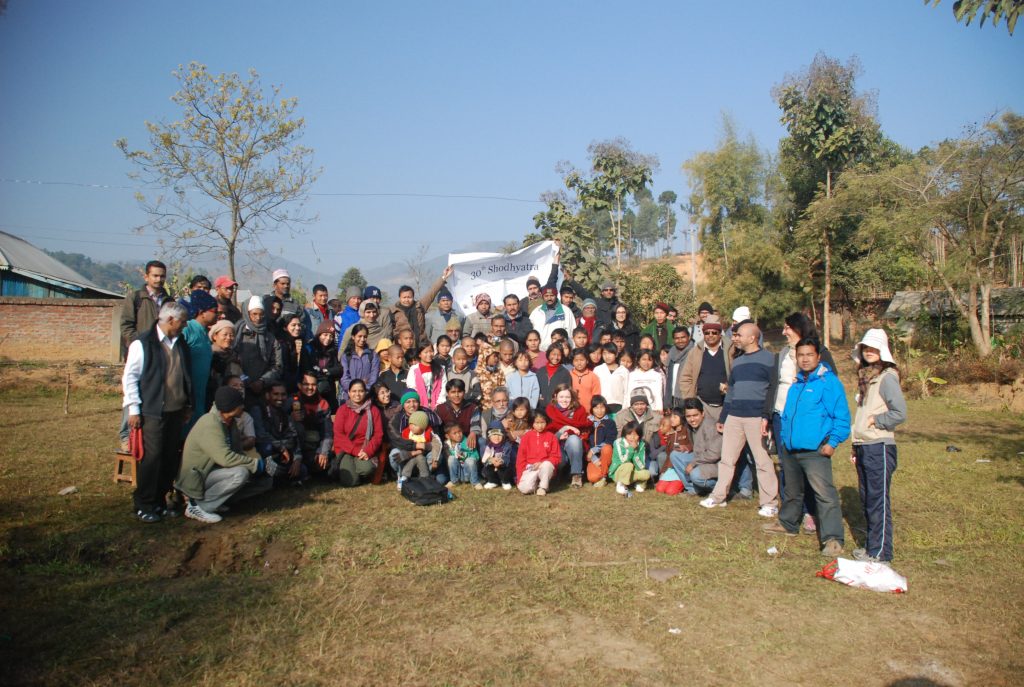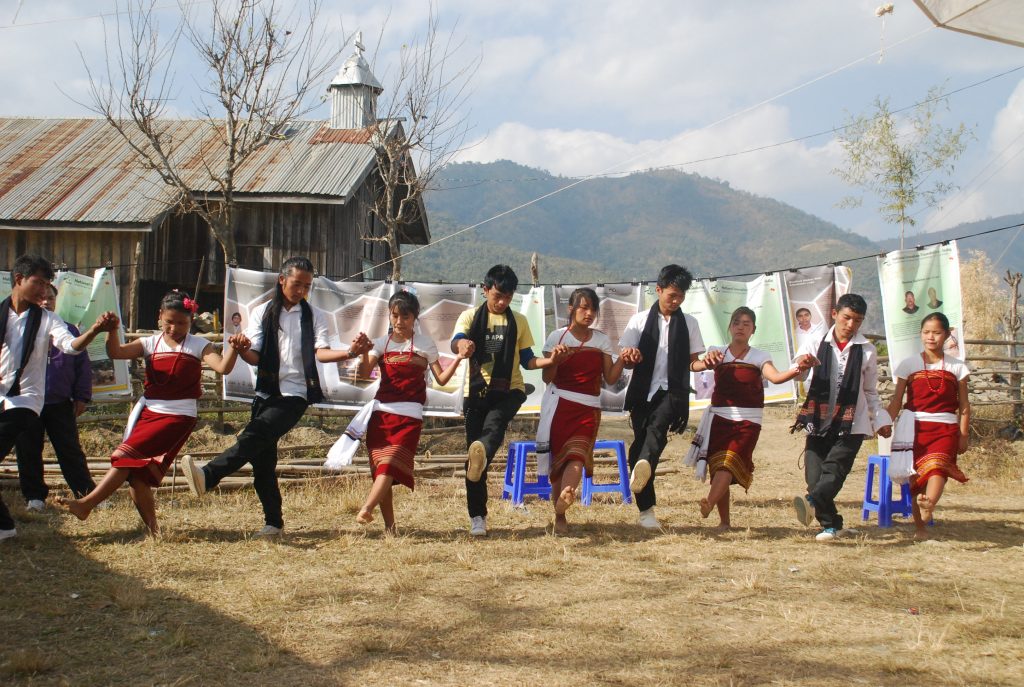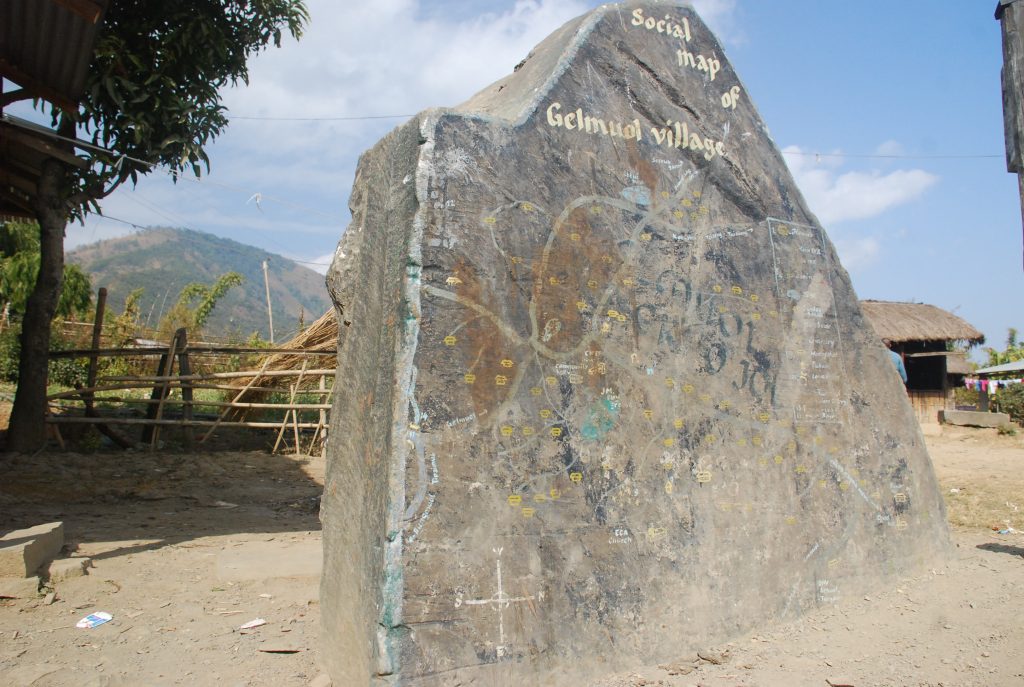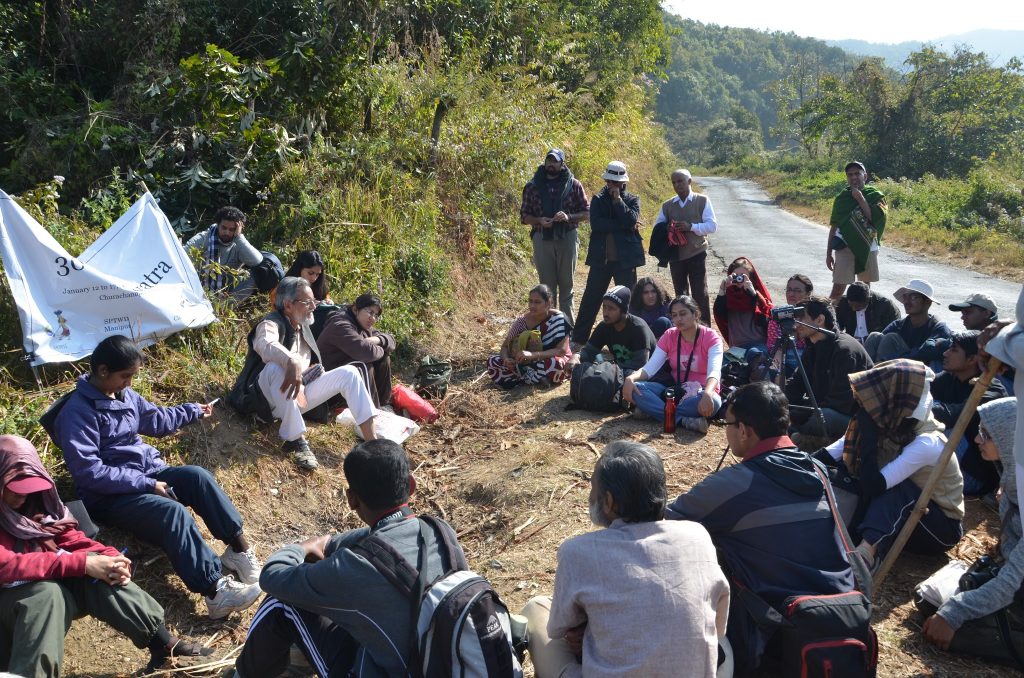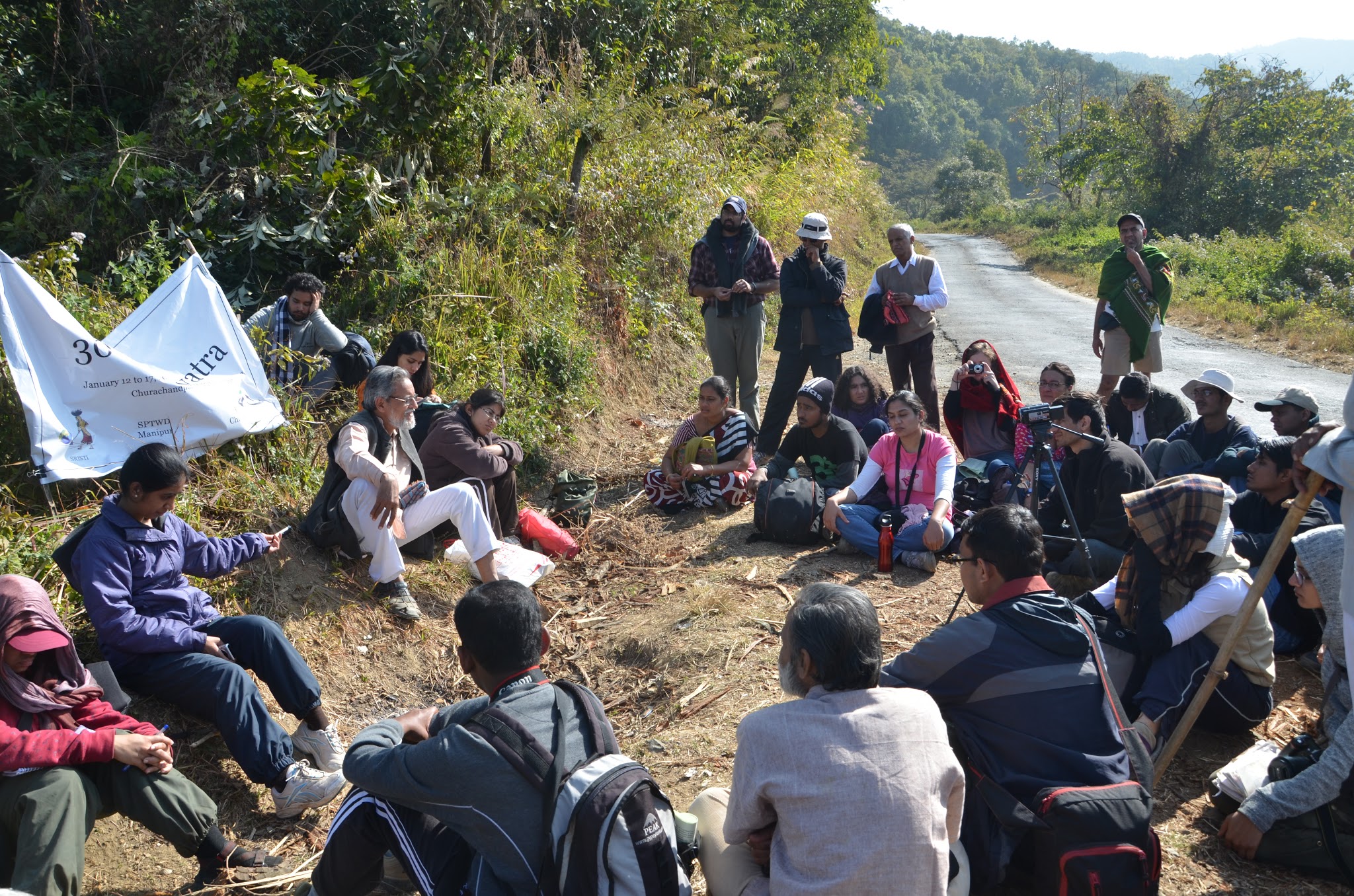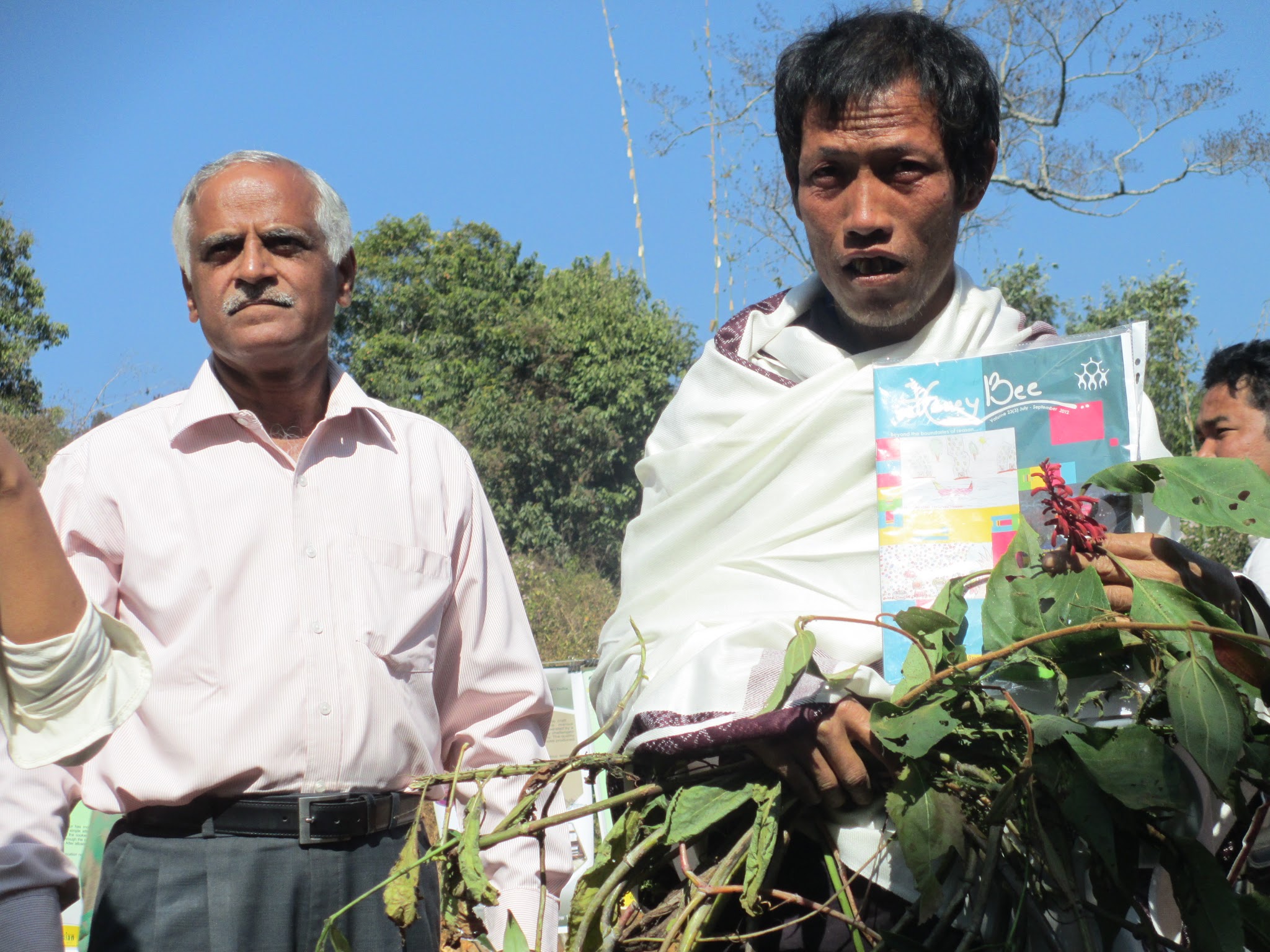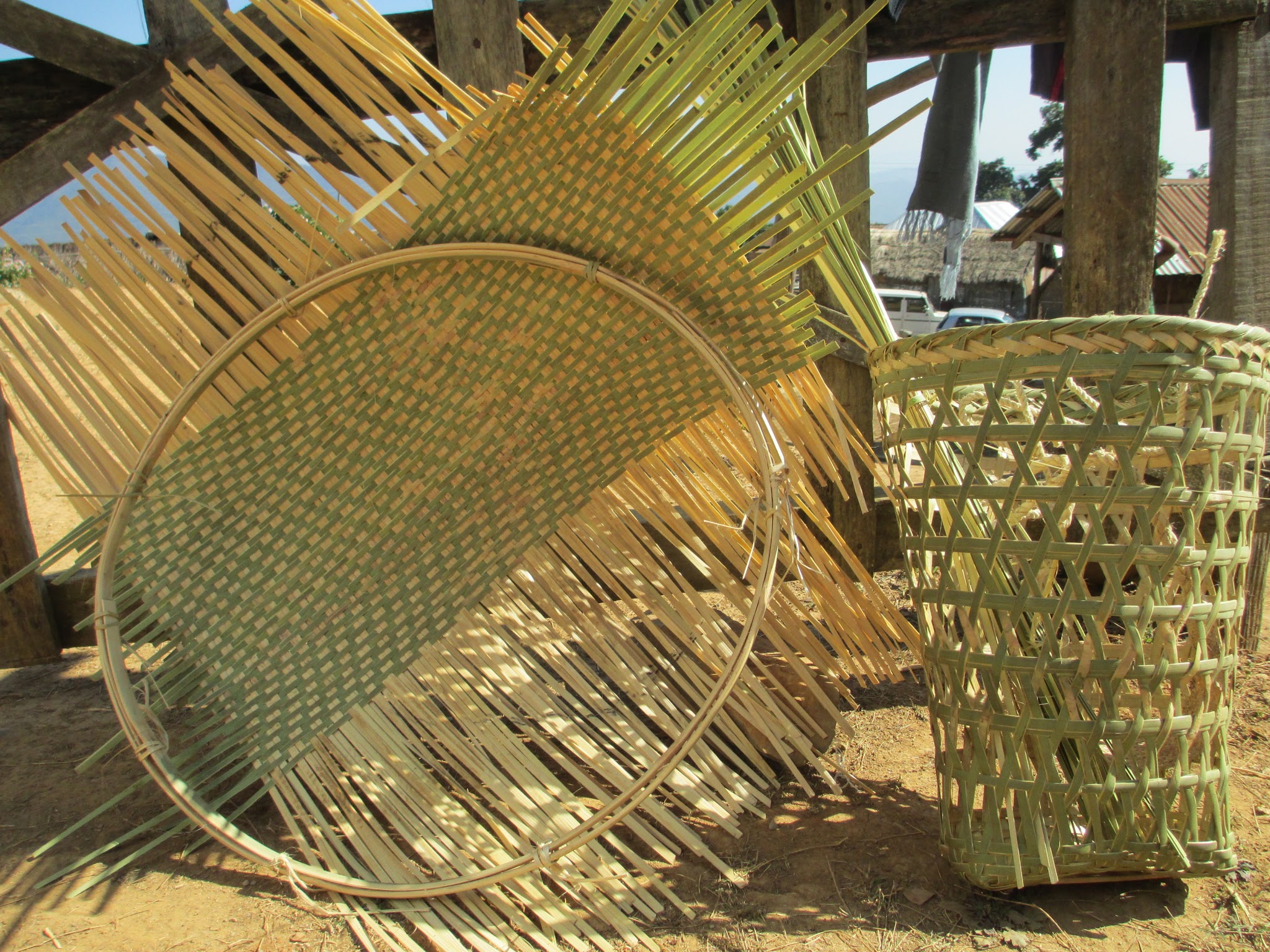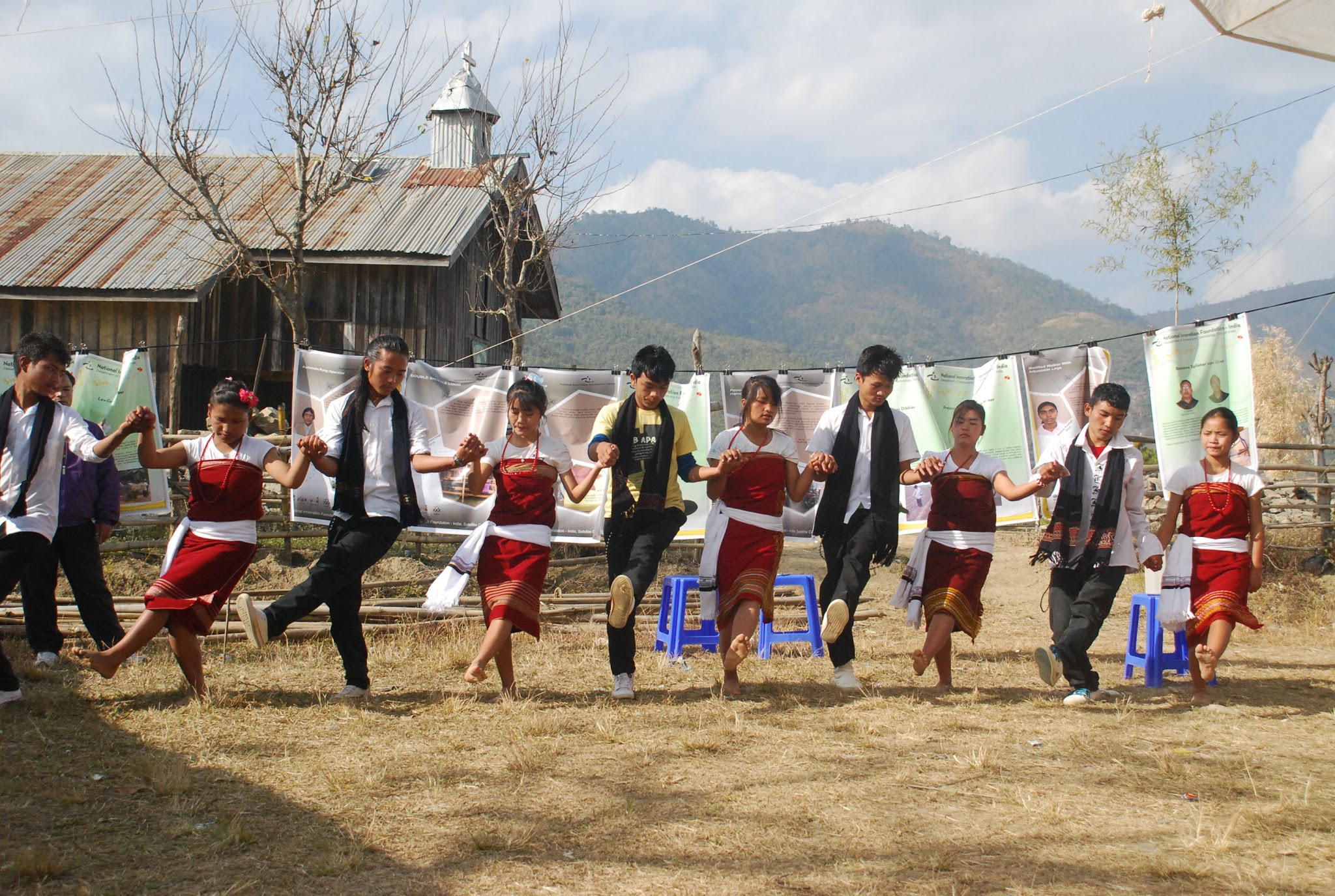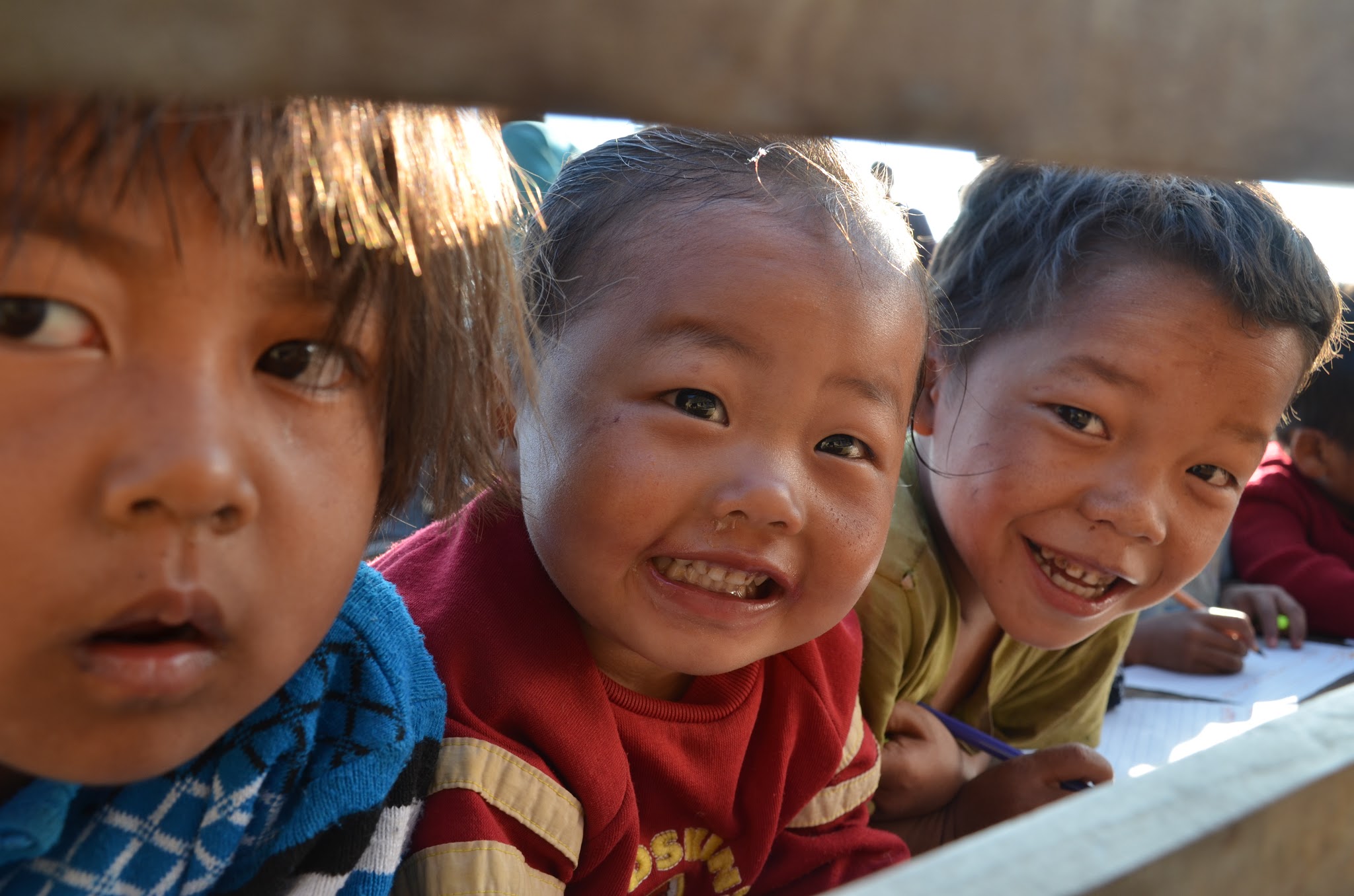Get Next Shodhyatra Update:
Phone:
079-27913293, 27912792
Email:
shodhyatra@sristi.org
30TH SHODHYATRA - CHURACHANDPUR TO KOLHEN (CHURANCHANDPUR DISTRICT, MANIPUR)
January 12-17, 2013
NEGLECTED HORIZONS, PROMISING SPROUTS
Rarely have we come across more creative children as we did during the 30th shodhyatra in Churachandpur, Manipur. In one of the economically most disadvantaged region, children had amazing dreams in their eyes even in some of the villages which had no schools. Thirst for knowledge and neglect by the state were paradoxical in a region which has been seriously conflict prone. The shodhyatris were hosted with warmth in every village including the one which had not been visited by any outsider for the last forty years. The innovators were keen to share their ideas, and markets had almost failed to notice the enormous potential of ecosystem services based industry. Starting from an orphanage in which kids from hitherto inimical tribes lived together, the yatris realised that peace was possible and prosperity could follow provided youth were engaged actively in the process of reconstruction. Will the peace be allowed to prevail, find out….
Mary Kom, no, many Mary Koms! When we visited the birthplace of the Manipuri Olympian, we realised why this region has given the nation one of its most loved sporting heroes. The place has a liberal gender-inclusive culture where women wear what they want, voice their opinion and actively participate in political processes.
With poor infrastructure, economic hardships and a history of violence, the region has not lost its vivacity. The government may be apathetic, but civil society is very vibrant. Several initiatives have sprouted in the last decade to overcome ethnic divide and bridge the gap by love, generosity and inclusive education and community development. Contrasting these concerns, are the warm and hospitable people and the magnificent natural environment. Amidst these contrasts we began our sojourn – a journey within and without!
The starting point of this shodhyatra rested in a mosaic of jhum plots interspersed with wild bananas, bamboos, cotton silk trees, mango trees … yes, mangoes! We were surprised to see mango trees at that altitude. We began our journey charged by the mystic, innocent smiles of children of the Sanga Muon Inn (SMI) children’s home. The kids had lost their parents in the social conflict between the Kuki and Naga tribes. The children’s home is run by the Kuki Women Union1 with the motto, “Mother of the motherless”. Some of the children from here walked with us all through the shodhyatra and participated in idea competitions and other activities. We could sense that the kids were a spirited and self-reliant group.
We met H Paokholien Lhungdim, a wellknown carpenter from Moul Nom village. He has developed a rice cooker wherein steam from a common drum cooks 25kg of rice each in two different cookers. Cooking time for the first batch is one hour but reduces to 45 minutes in successive batches as the water is already hot. This cooker is used in community functions to cook large quantities of rice.
In the next village, Kaprang, we met Pu Tongkhothang Kipgen, a 73 year old herbal healer recognised for the treatment of many chronic diseases like tuberculosis, cancer, heart problems, and diabetes. As our journey unfolded, we could not help notice the neglect that the region has suffered for ages. In the seventy kilometres that we walked, we did not come across any hospital. The region was bereft of regular supply of electricity in most places, lacked proper education and healthcare. Yet, the people hardly complained. Somehow community educators seemed to be doing a good job, how else could children be so creative!
In Khotuh, we were the only visitors after World War II, when the Japanese, in their war against the allied forces, had attacked the region. One cannot resist drawing analogies between the times. Back then the war was between the British and the Japanese but the common man suffered. Today, the conflict is with and within the state and yet again, the locals are bearing the brunt. We met an elderly woman who recounted that disease incidence had increased in the post war period.
At times, due to social tensions, the roads are blocked for days. But this isolation has made them self-reliant. The isolation causes localised inflation in the market. So, people tend to grow their own food; almost every household has a kitchen garden. Paddy, potatoes, turmeric, pineapples, tapioca, chillies, yongchak (Parkia roxburghii), tomatoes, sugarcane, and areca nuts are the main crops. People use bamboo and other natural products from the surrounding forests. When the agarbatti making machine was demonstrated, many villagers showed interest in getting it. The multi-purpose food processing machines of Dharamveer also evoked considerable interest because huge tracts of lemon grass were found in the region besides many other fruit trees.
All the villages invariably had a bell. In case of an emergency, for example, if a fire broke up in some house, people would ring the bell to inform the other villagers and seek help. Of course, at a place where network receptivity is sparse, there are hardly any better alternatives. We also came across beautiful handicrafts and handlooms.
In N Pangsang village, we met Pu Hempao Tothange who has formulated a growth promoter from bamboo vinegar which increases the size of root and tuber crops up to three times.b Here, Dharamveer Kambhoj, an innovator, made sweets from locally available gooseberries and shared with the villagers. This was an effort to create awareness about his machine and also to showcase products based on locally available resources. We also met a herbal healer, Pu. Jang Pao Haokip who shared 25 medicinal plants which were reported to treat diarrhoea, arthritis, wounds and urogenital problems.
Sadbhav SRISTI Sanshodan Laboratory is conducting experiments on the practices we received and will share the results (and benefits if a product is developed) with the communities from which we received the practices.
In Lhanjang the children surprised us when they brought 30-35 plant samples along with their uses. They had written it in their local language. On realising that we did not know their language, they sat with us and helped us in the translation. A plant locally called ko chang (Lilium distichum) has edible roots and food made from it is relished by the locals. They also use chives (Allium tuberosum), locally called “maroi nakupi”, which taste like a mix of garlic and onion and are believed to help in lowering cholesterol. We came across numerous varieties of chillies too. Chutneys and special delicacies are made from the pods of yongchak. These fetch a very good price in the market. But the plant is affected by fungus and pests and the whole plant dies about ten years after the pest infestation (The Sangai Express, Sep 28, 2012). The villagers asked for a solution to this. They said that if a solution to this can be found they would like to plant this tree in the whole region if solution could be found, since as it fetches a very good price.
In Lhanjang, we also met an ex- service man in full military dress. He fought the Second World War for the British and he and his wife who have been married for 66 years are more than 90 years old. We conducted idea competitions in the villages and many good and creative ideas came out from this remote corner of the country. We went to villages like Khotuh where, notwithstanding the right to education, there was no school in any direction for four to five kilometres. It was not surprising that during the idea competition, most children articulated the vision of a school in the village. Can one really complain if some young people get angry and lose confidence in the peaceful resolution of the developmental challenges?
In another village, we met a kid, Seigoulien, who thought about a double sided bottle; a scissor which can cut both sides and a scooter with two rear wheels. She looked at the world quite differently. Will our teachers tolerate her queer ways? Lhingnei Vah suggested having spectacles with adjustable vision. Tin Dei wanted to design a foldable pen. Another girl thought of spectacles with a torchlight to read in the night. Some other ideas were a solar airplane and a gun in which the target should be reflected on the inner side of the goggles.
The children made beautiful paintings. In N. Pangsang, kids designed their village. They described where they wanted the school, the dispensary, and the houses. Then, there was a folk dance by young enthusiasts who also taught the shodhyatris a few steps. And some of us could not refrain from wearing our dancing shoes which were long lost in dealing with the ups and downs of life. Despite all the violence in the region, the communities still find a way to celebrate life together with the whole community.
The level of hygiene and sanitation in the region is remarkable. Though the region was amongst the most economically backward every household had toilets and urinals. In Songpi, we drank tea made from pomegranate leaves. In Khotuh village there was no school and the children had to walk five km to attend school. They thanked the shodhyatris for giving them a reason to come together. As a parting gift, they gave walking staffs to the shodhyatris.
These staffs helped the yatris a lot to walk the hilly terrain and clear the bushy ways when they were stuck up on the hilltop on our way from Lhangjang to P. Sejol. Shodhyatris were very thankful to Ng Lhing Nei Chan Mate, fondly called Chachan, who had sent an SMS to someone in the village and informed that the yatris had lost their way. The people of P Sejol sent three groups through three ways different ways into the jungle. Chachan is a class 12 student from Hengkot village and she accepted our invitation to walk with us. We appreciate her support to understand the local language and culture.
After the morning meeting, the entire village of P Sejol stood in a line and shook hands with all the shodhyatris. When the kids got a globe as a prize for the idea competition, they immediately started searching for their region on the map.
In Tuilumjang village, our last destination, we met a carpenter who made beautiful sculptures and carvings. Gl. David Mate, a famous singer of this region sang for us. Gl. David Mate is currently studying in Delhi. Another villager played beautiful melodies by using two leaves as his musical instrument.
Though the region receives ample rainfall it faces scarcity in the lean months, perhaps due to inadequate rainwater storage or harvesting structures. Yet, we came across a traditional rice husker using the flow of the stream to run the husking pedal.
Water filters were generally there in all the households. We felt that the region might be facing a lot of water related diseases. But, that was not the case. Distressed by the history of violence in the region, they welcomed shodhyatris and suggested that such activities should be taken up twice or thrice a year so that their children get inspired and enlightened by the positive vibes of creativity. We are trying to set up a community innovation centre in the region with different villages having different innovative devices so that the people can learn from each other.
Engagement with Manipur may open eyes of urban consumers and others to the immense potential of beautiful handlooms, sustainable lifestyles, and hospitable culure. It is just a matter of caring. Do we really care?
FLICKR GALLERY
